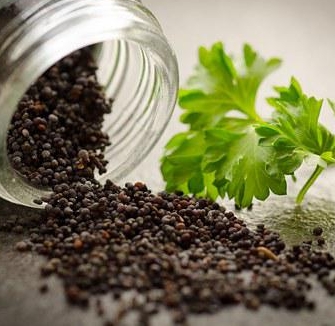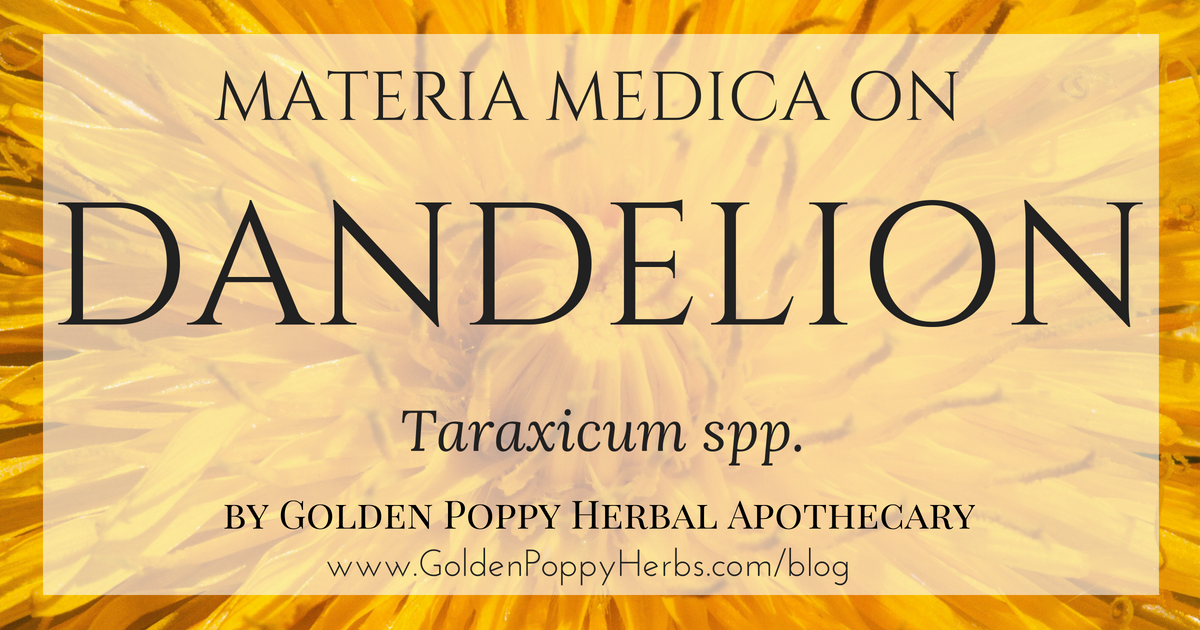THE HERB WE LOVE TO HATE
(BUT SHOULD REALLY JUST LOVE)
Dandelion is one of the most familiar plants to almost everyone. From those who hate it and go to great lengths to exterminate it (think Round-up), to those who love it with a passion, a relationship with that ubiquitous yellow flower is pretty unavoidable.
As children, we wistfully collected dandelions for their wish-granting powers, blowing their parachute seeds across otherwise pristine lawns, coating them in layers of soft white. Man, our parents hated that. Little did they know, though, the dandelion is quite special. Let’s take a closer look at this lovely little plant…
Recognition for dandelions has been growing and spreading in the past few years. Herbal conferences have been named after it, like the Dandelion Seed Conference in Olympia Washington, and coffee substitutes are being made from it, like the Dandy Blend Herbal Coffee (so good!). The leaves are even being sold in the produce department of WholeFoods, which in the plant world is how you know you’ve arrived. Basically, dandelion is catching on.
Dandelion is a fantastic mild stimulant for your liver. Say you had a few too many glasses of wine (or whiskey!), OR you have a Spring Break coming up, OR an awesome Colorado summer festival line up, Dandelion will help your liver clean out those toxins from your body. We’re not encouraging you to drink, but if you do, drink Dandelion Tea too.
To put this delicately, Dandelion helps your digestive track “get your juices flowing.” To put it indelicately, it helps with constipation.
Dandelion is brimming with nutrients and vitamins that naturally clear clogged pores, helping with skin irritations like acne, eczema, and psoriasis. For those of you already gifted with a beautiful complexion, lucky you!, and Dandelion will make it even healthier.
Dandelion’s awesomely detoxifying capabilities make it the perfect component for a spring cleanse when your body is ready to shed the heaviness of winter and get a fresh start.

MATERIA MEDICA
Latin Name: Taraxacum officinalis, Asteraceae family
Common Name: Dandelion
Parts Used: Leaves (harvested in early spring), root (harvested in the fall), flowers (harvested when blooming)
Primary Uses:
- Mild liver stimulant, promotes bile production
- Great for stimulation of digestive tract, gets the ‘juices’ flowing
- Gastrointestinal tonic
- Prevents gallstone formation and may help to dissolve certain types of gallstones
- Root is very detoxifying, helps stimulate the liver and gallbladder to remove toxins
- Beneficial for constipation
- Helps with acne, eczema, psoriasis
- Good for people who have issues with fluid retention
- Helpful for hepatitis
- Helpful for arthritis, osteoarthritis, and gout
- Leaf has more of an effect on the kidneys while the root has more effect on the liver and gallbladder
- Due to it’s cooling properties and action on the liver, it can be helpful in treating hot flashes
- Makes a great salad green
- Flowers are also tasty in salads or delicious to dip in dressings
Dosage & Preparation:
- Tea: drink a few cups a day
- Strong Decoction (Dried Root): 2 tablespoons per 10oz water. Simmer on stove for 30min-4 hours, strain and drink
- Standard Infusion (Leaves): 2 tablespoons fresh leaf, chopped, in 10oz hot water. 1 tablespoon of dried leaf per 10oz hot water.
- Tincture: (Fresh Root, 1:2) 30-60 drops.
Energetics: Cool and dry, bitter
Parts Affected: Liver, gallbladder, genitourinary tract
Herbal Actions: cholagogue, choleretic, digestive bitter, alterative, diuretic
Clinical Actions: mild diuretic, mild laxative
Biochemical Constituents: inulin, sesquiterpene lactones, triterpenes, Vitamins A, B, C, and D; leaf only: coumarins, carotenoids, minerals (inc. potassium); root only: taraxacoside, phenolic acids, minerals calcium and potassium
Cautions: Do not use for extended periods of time due to the possibility of over-stimulating the liver. Should not be taken in cases of biliary obstruction and/or biliary abscesses.
While it’s true that Dandelion grows in abundance, it is often heavily sprayed with harmful chemicals, so only use Dandelion purchased from a store or other source you KNOW is clean. Like, absolutely positive.
Do you like dandelions?
Do they bring up memories from your childhood?
How do you use them?
Browse by category
- Aromatherapy
- Astrology & Magic
- Ayurdeva
- Botany Foraging & Gardening
- Chakras
- Digestion
- Earth Connection
- Energetics
- Flower & Gem Essences
- Folk Traditions
- Herbalism & Holistic Health
- Immune Support
- Materia Medica
- Mushrooms
- Nutrition
- Seasonal Living: Autumn
- Seasonal Living: Moon
- Seasonal Living: Spring
- Seasonal Living: Summer
- Seasonal Living: Winter
- Skin & Body Care

Don’t Miss a Thing!
Enter your email below to be the first to know about sales, new products and tips for taking care of your pieces.


